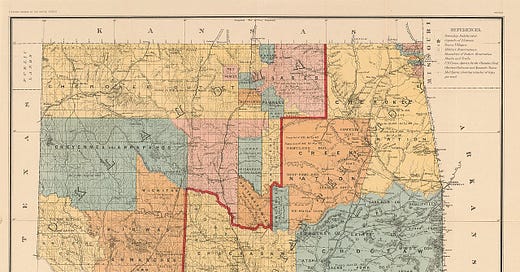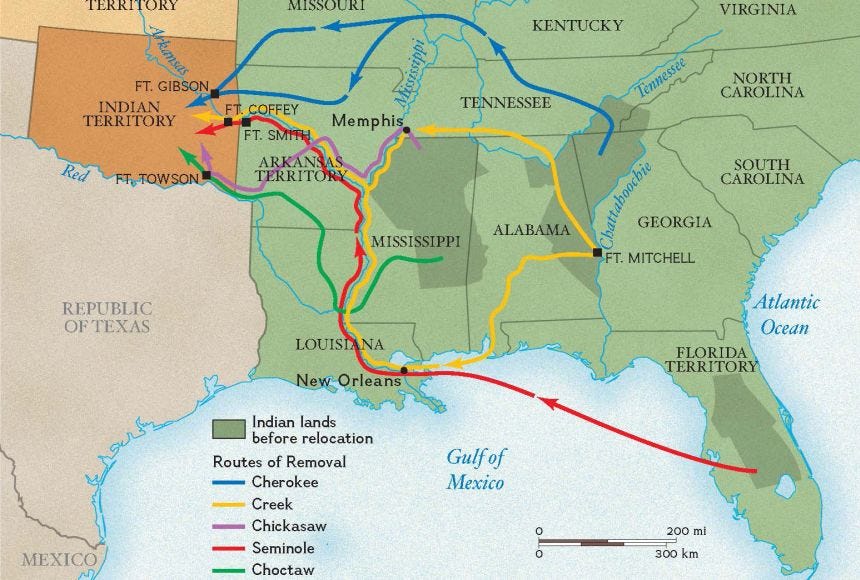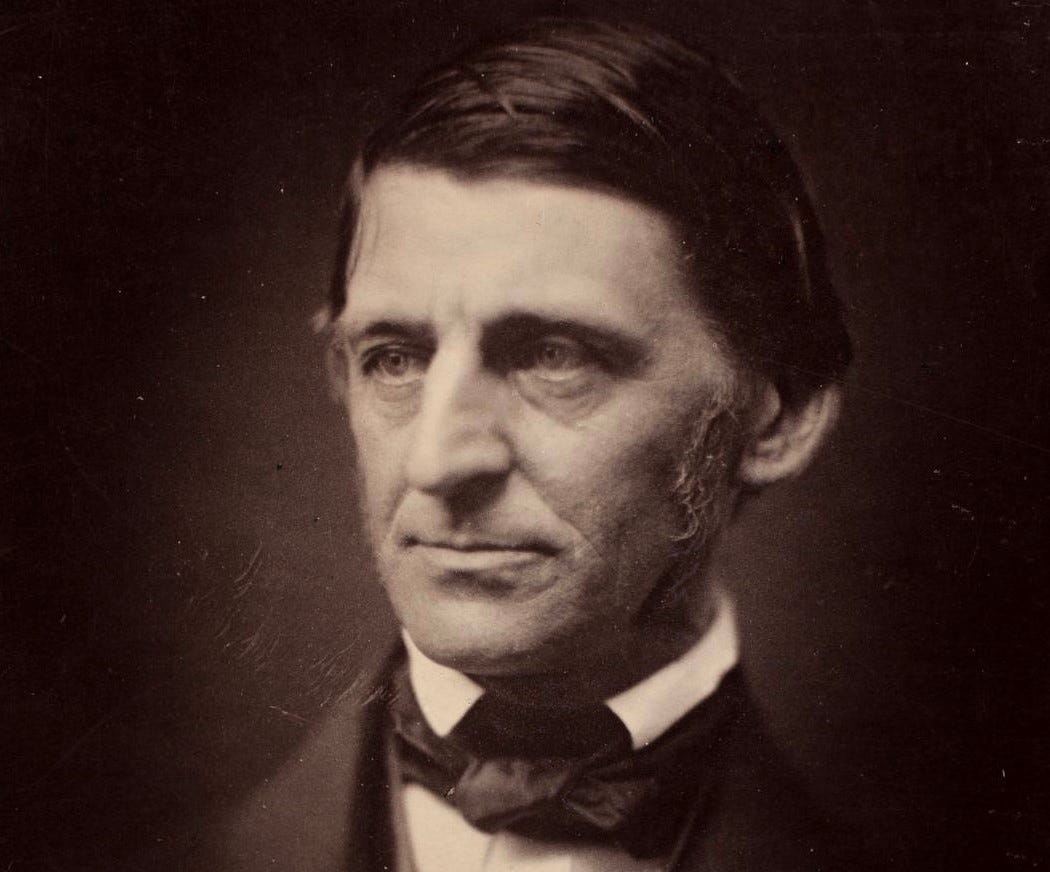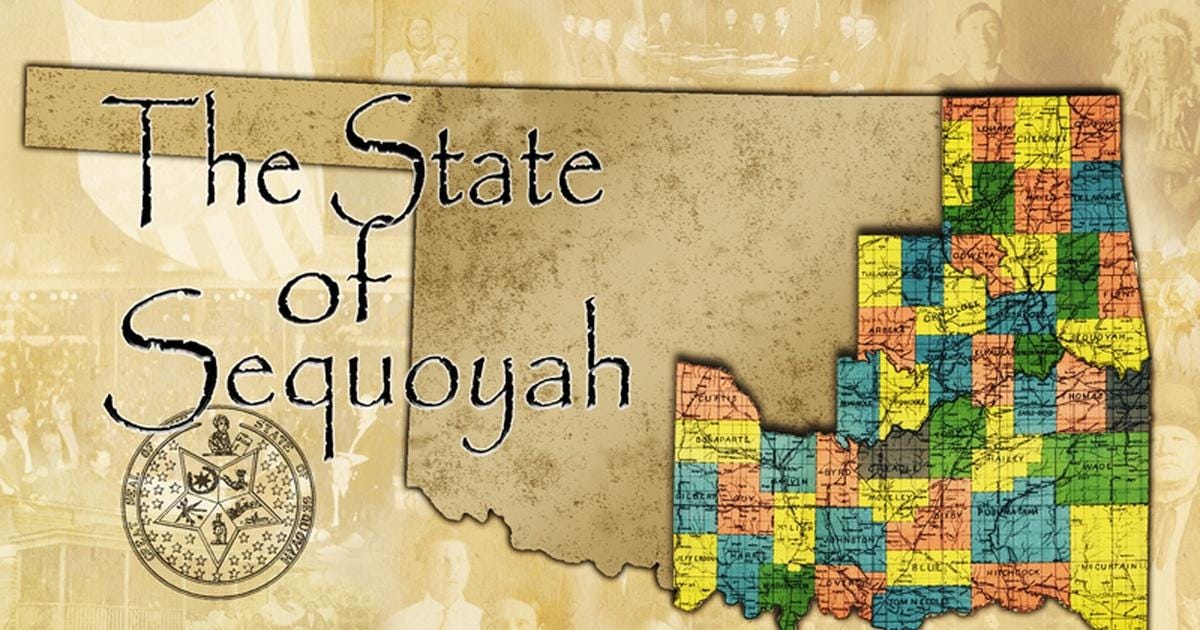Of broken promises, the 'Trail of Tears' and the disappearance of the 'Indian Territory'
'Quintus Hopper of Nevada' series: What happened on the lands that are now the State of Oklahoma, is another exemplary tale of woe, horror and tragedy for American Indians.
Quintus Hopper of Nevada, published in January 2022, is a historical novel that follows the epic and peculiar life of a frontier newspaper typesetter. As part of my research I made extensive use of newspaper archives and, in this series, I’ll share some of my often surprising findings. Here are history, commentaries and contemporary newspaper articles as they relate to the novel. This time a look at Oklahoma, what the territory had meant to American Indians - and how treaties were, as always, trampled in favor of white man when Oklahoma joined the Union.
The below article may appear incongruous at first, as it merely reports some ‘telegraphic brevities’ from around the world – as such, it gives a glimpse into the state of the world at that time. The article was printed in the Las Vegas Age, the paper founded in 1905 after the town had been put on the map. In the novel, Quintus considers employment there, but it is too far from his home (which is far closer to Searchlight). I’ve chosen to highlight that particular article, because one of those brevities mentions the admittance of the state of Oklahoma to the Union. That act marks the culmination a long list of broken promises with the indigenous people across the United States.
About those promises: White man had encroached on the lands of American Indians long before the formation of the United States. When independence was achieved, President George Washington saw a just ‘Indian policy’ as one of his priorities. There were hopes of shared peace and an expectation that, over time, they would adopt white man’s ways. Washington developed a formal method for managing affairs with Native Americans and the legislature adopted the President’s wish of using treaties as the basis for conducting relations with the tribes. Soon the northern tribes were encouraged to sign such treaties. In 1790, President Washington addressed the Seneca and assured them that their lands were secure, that no one could take their lands, that the only way ownership of their lands could change would be by way of a treaty with the United States government. The first President of the United States said to the Seneca:
“Here then is the security for the remainder of your lands. No State nor person can purchase your lands, unless at some public treaty held under the authority of the United States. The general government will never consent to your being defrauded. But it will protect you in all your just rights.”
There were others who, from the very beginning, saw the natives as a hindrance to progress and they called it the ‘Indian Problem.’ In their view it was the time of the white man, and the time of the red man to preferably go extinct. What was proclaimed in words and treaties by the government, was summarily ignored by settlers. The same tribes that had agreed to treaties, found themselves facing more and more white men, taking land and killing game.
As in the north, settler trouble was brewing in the south. While the government sent messages of assurance, friendship and plans for trade, and while treaties were signed, the relentless incursions by American settlers continued. Those with kinder hearts looked to the future with grave trepidation, fearing that a continuation of white man’s current land grabs would lead to the extinction of tribes and that, before long, not a single American Indian would be left on the eastern side of the Mississippi. By 1796 even Washington had to concede that the national agenda was no longer determined by the men at the capital, but by the avalanche of settlers, charging further and further into the land. The trajectory of the growing nation inevitably led to the Indian Removal Act of 1830.
The idea was simple and compelling (from a white man’s point of view): With the Mississippi river forming a natural border, the Choctaw, Creek, Chickasaw, Cherokee and Seminole (who had been named the ‘Five Civilized Tribes’), should relinquish their ancestral lands on the eastern side of the Mississippi and remove themselves, one way or another, to the western side of the river. There the Indian Territory was formed, a place of wilderness that would be the new lands for many tribes. More than sixty thousand American Indians either left voluntarily, or after battles fought with ink and battles fought with blood.
The relocations would be remembered as the ‘Trail of Tears,’ with over ten thousand men, women and children losing their lives to exhaustion, starvation and disease. In eastern cities, many opposed that injustice inflicted upon the tribes and when the government clearly ignored the rights of the Cherokee and their just claim to an existing treaty, Ralph Waldo Emerson gave voice to his outrage. In a letter to then President Van Buren he wrote:
“Such a dereliction of all faith and virtue, such a denial of justice, and such deafness to screams for mercy were never heard of in times of peace and in the dealing of a nation with its own allies and wards, since the earth was made. Sir, does this government think that the people of the United States are become savage and mad? From their mind are the sentiments of love and a good nature wiped clean out? The soul of man, the justice, the mercy that is the heart in all men, from Maine to Georgia, does abhor this business.”
Emerson’s was one of many voices of compassion, and yet those voices were drowned out by the clamor of manifest destiny. By 1838 the removal of the ‘Five Civilized Tribes’ was mostly complete. Then followed the gold rushes and the land rushes, and the Civil War and the Indian Wars – and through all of everything the race of the white man expanded, flourished, grew and took, ever more.
In the year of the massacre at Wounded Knee, the United States government struck another blow with the adoption of the Organic Act that cut the Indian Territory in half, calling the other half the newly organized Oklahoma Territory. In 1906, a number of acts were adopted in anticipation of Oklahoma Territory obtaining statehood. Attempts to create an all-Indian state named Sequoyah with the remaining half of what had once been the Indian Territory, were refused by Congress, and President Theodore Roosevelt proposed rejoining Indian Territory and Oklahoma Territory - but, obviously, not for the benefit of American Indians. And so, on November 16, 1907, Oklahoma was admitted to the Union as its 46th state.
What had begun with the removal of Native American tribes from their homelands to a remote place across the Mississippi named Indian Territory, ended with its disappearance. What remained were, within the new State of Oklahoma, the remnants of more than thirty tribes that saw their lives disrupted, with promises broken, once again.
November 09, 1907
(Las Vegas Age, Las Vegas, Nevada)
TELEGRAPHIC BREVITIES
GLEANED FROM NUMEROUS SECTIONS.
Items of Interest from the Outside World
Condensed for Our Busy Readers.
NEW YORK. – Announcement was made Saturday that insanity is to be the plea of defense of Harry K. Thaw, whose second trial for the slaying of Stanford White will begin on December 2.
BOISE, Idaho. – Judge Wood has set the Pettibone case for trial November 21. He announced that if the case was further delayed he would continue it to the January term.
PSKOFF. – Bank robbers today attacked seven men who were escorting a cashier carrying 1300 rubles, murdered the whole party and decamped with the money.
SHELBYVILLE, Ky. – The National Tobacco Growers’ association late today unanimously adopted resolutions declaring against the raising of a crop of burley tobacco next year.
NEW YORK. – A son was born to Mr. and Mrs. William K. Vanderbilt Jr., Saturday night. Mrs. Vanderbilt was formerly Miss Virginia Fair. The Vanderbilts have two daughters, aged 7 and 4 years respectively.
ROME. – The pope has excommunicated the authors of the reply to his recent encyclical on “Modernism” and has instructed the various bishops to forbid the reading of this reply in their dioceses.
MEMPHIS, Tenn. – Travel-stained and brown from exposure, but hale and hearty, Otto Wagner pulled into Memphis Monday after doing 1300 miles on horseback, accomplishing the feat in fifty-two days of continuous traveling.
HONOLULU. – Hawaii’s sugar crop for 1907 is the largest in the history of the islands. It amounts to 420,000 tons. Next year’s crop promises to reach 575,000 tons. This large increase is due to the extensive acreage and irrigation.
NEW YORK. – Dr. Walter R. Gillette, formerly vice president of the Mutual Life Insurance Company, who was sentenced to six months’ imprisonment for perjury, was released on bail Saturday afternoon, pending an appeal for a new trial.
WASHINGTON. – President Roosevelt will issue the proclamation admitting the new state of Oklahoma on Saturday, November 16. The constitution was formally placed in the hands of Governor Frantz and a large delegation from Oklahoma at 11 o’clock this morning.
TOKIO. – The Jiji has published a dispatch from Vladivostok saying that the crews of two torpedo boats there mutinied and attacked the city from the sea. The soldiers garrisoning the fortress responded with a brisk fire, which resulted in one torpedo boat being destroyed.
MEXICO CITY. – Since the first of the year there have arrived at the port of Salina Cruz 4763 Chinese. Of this total two thirds have for their destination the United States. A great many of these foreigners seem to have at one time lived in the United States and are laboring under the impression that they can get in again.
BUTTE, Mont. – By an overwhelming vote Butte miners Saturday night accepted a reduction of wages from $4 to $3.50 announced by the Amalgamated Copper Company, in accordance with the contract entered into between the company and the union that the wages should be $3.50 when copper is below 18 cents and $4 when it is above.
VYATKA, Russia. – As Prince Cortchakoff, the acting governor of Vyatka, was driving by the cathedral Monday at noon a bomb was hurled at his carriage, but failed to explode. The perpetrator of the outrage then attempted to shoot the prince, but a Circassian soldier of the guard shot and killed the would-be assassin, who was a former student of the local high school.









